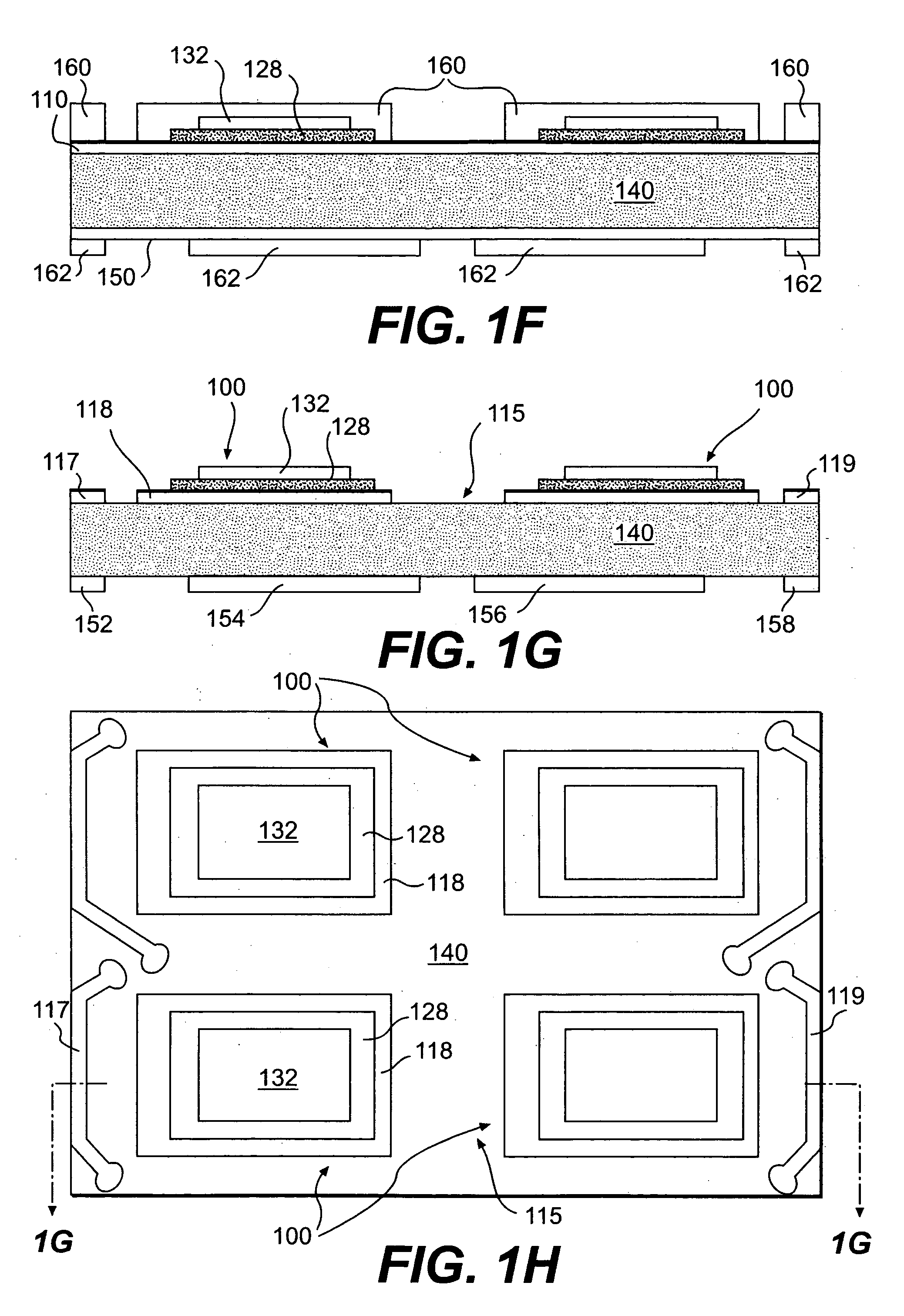Thick film capacitors, embedding thick-film capacitors inside printed circuit boards, and methods of forming such capacitors and printed circuit boards
a thick film capacitor and printed circuit board technology, applied in the direction of variable capacitors, stacked capacitors, printed circuit non-printed electric components association, etc., can solve the problems of many capacitors being shorted after etching, capacitor dielectric glass and dopants being attacked and dissolved, capacitor dielectrics may be shorted, etc., to reduce the resultant dielectric constant, reduce the risk of shortening, and improve the reliability and performance of capacitors
- Summary
- Abstract
- Description
- Claims
- Application Information
AI Technical Summary
Benefits of technology
Problems solved by technology
Method used
Image
Examples
Embodiment Construction
[0020]FIGS. 1A-1J illustrate a first method of manufacturing a multilayer printed circuit board (PCB) 1000 (FIG. 1J) with embedded capacitors having a single-layer capacitor on metallic foil design. For illustrative purposes, four embedded capacitors are illustrated as formed in FIGS. 1A-1J (only two capacitors are visible in the sectional views FIGS. 1A-1G and 1I-1J). However, one, two, three, or more capacitors can be formed on a foil by the methods described in this specification. The following written description is addressed to the formation of only one of the illustrated capacitors for the sake of simplicity. FIGS. 1A-1G and 1I-1J are sectional views in front elevation. FIG. 1G is a cross section taken on line 1G-1G in FIG. 1H. FIG. 1H is a top plan view showing four embedded capacitors 100.
[0021] In FIG. 1A, a metallic foil 110 is provided. The metallic foil 110 may be of a type generally available in the industry. For example, the metallic foil 110 may be copper, copper-inv...
PUM
| Property | Measurement | Unit |
|---|---|---|
| Dielectric polarization enthalpy | aaaaa | aaaaa |
| Metallic bond | aaaaa | aaaaa |
Abstract
Description
Claims
Application Information
 Login to View More
Login to View More - R&D
- Intellectual Property
- Life Sciences
- Materials
- Tech Scout
- Unparalleled Data Quality
- Higher Quality Content
- 60% Fewer Hallucinations
Browse by: Latest US Patents, China's latest patents, Technical Efficacy Thesaurus, Application Domain, Technology Topic, Popular Technical Reports.
© 2025 PatSnap. All rights reserved.Legal|Privacy policy|Modern Slavery Act Transparency Statement|Sitemap|About US| Contact US: help@patsnap.com



